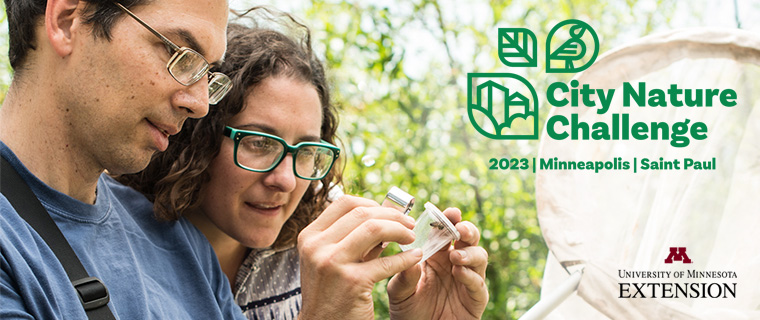
About
There is nature all around us, even in our cities! Knowing what species are in our city and where they are helps us study and protect them, but the ONLY way to do that is by all of us – scientists, land managers, and the community – working together to find and document the nature in our area. By participating in the City Nature Challenge, not only do you learn more about your local nature, but you can also make your city a better place – for you and other species!
The City Nature Challenge makes documenting your local nature fun by creating an international, bioblitz-style competition. Cities across the globe are in a contest against each other to see who can make the most observations of nature, who can find the most species, and who can engage the most people.
How to participate
The City Nature Challenge will take place in two phases. During the first phase, you can participate in the Minneapolis-St. Paul City Nature Challenge by submitting observations to iNaturalist from anywhere in the 13-county metro area, even your backyard! Observations made during the challenge dates and within the metro area will automatically be added to the competition. During the second phase, iNaturalist users across the world will help identify the new observations.
2023 Update
The results are in from the 2023 Minneapolis - St. Paul City Nature Challenge! Although we’ve joked that Minnesota weather puts the “challenge” in City Nature Challenge, 343 users contributed 3,486 observations in the 13 county metro area between April 28 and May 1.
The most-observed species were ruby-crowned kinglet, mallard duck, and yellow-rumped warbler. The mallard duck was the most-reported species across all participating cities in the world so we’re in good company.
While the late spring and cool weather may have affected the overall number of observations, a whopping 65% of observations were classified as “research grade,” meaning they are automatically exported to databases like the Global Biodiversity Information Facility (GBIF) and used by scientists across the world. Collecting this kind of data each year provides important baseline data and we’re grateful for everyone who uploaded their observations or provided identification for others.
Using iNaturalist
Visit iNaturalist.org or download the app from the AppStore or Google Play. Create an account and start making observations! If you're new to iNaturalist or just want a refresher, you can watch the videos below to learn how to take great photos, make observations, and add identifications to the species you observe.
Events
Check back in 2024 to find out about ways you can explore spring with other iNaturalist enthusiasts!